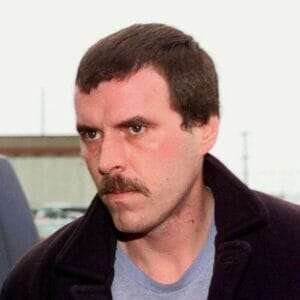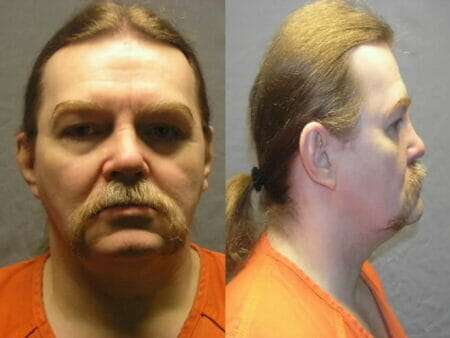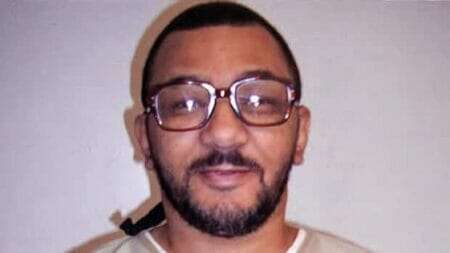
William Patrick Fyfe is a serial killer and serial rapist from Canada who is responsible for five murders however is believed to be responsible for more. In this article on My Crime Library we will take a closer look at William Patrick Fyfe who police believe is also The Plumber rapist
William Patrick Fyfe Early Years
William Patrick Fyfe was born in Toronto Ontario in 1955 however he would be taken in by his aunt and moved to Montreal. William Patrick Fyfe would be employed as a handyman.
William Patrick Fyfe Murders
William Patrick Fyfe would be tied to the murders after police found DNA from one of the murder scenes. William Patrick Fyfe would be charged with the following murder
- Hazel Scattolon, a 52-year-old woman who was stabbed to death and sexually assaulted in 1981.
- Anna Yarnold, a 59-year-old woman who was bludgeoned to death on 15 October 1999 in Senneville, Quebec
- Monique Gaudreau, a 46-year-old woman who was stabbed to death on 29 October 1999 in Sainte-Agathe-des-Monts, Quebec.
- Teresa Shanahan, a 55-year-old woman who was stabbed to death in November 1999 in Laval, Quebec.
- Mary Glen, a 50-year-old woman who was beaten and stabbed to death on 15 December 1999 in Baie-D’Urfé, Quebec
William Patrick Fyfe Serial Rapist
Police in Montreal Quebec believe that William Patrick Fyfe was a serial rapist known as The Plumber who was responsible for a series of violent sexual assaults in the 1980’s in downtown Montreal
William Patrick Fyfe Prison
William Patrick Fyfe would be convicted of the five murders and would be sentenced to life in prison with no chance of parole for 25 years which was the longest prison sentence in Canada at the time.
William Patrick Fyfe More News
He spoke without emotion, as though recounting the details of an old movie. In a chilling declaration, a 46-year-old handyman already in prison for the murder of five women has admitted to killing four others.
The surprise jailhouse confession has turned William Patrick Fyfe — described by a police detective as “a very, very ordinary man” — into one of the worst serial killers in Canadian history, and perhaps the worst serial slayer of women.
“He was a vicious murderer,” Montreal Urban Community police Commander André Bouchard said yesterday.
The killings went on for 20 years; they were random and gruesome, often involving sexual assaults and multiple stabbing. The youngest victim was 26; the oldest 59. What the women had in common was being home alone in the Montreal area when Mr. Fyfe showed up.
He killed his first victim in 1979, while out on a day pass from a Montreal jail for a minor crime. He killed his last victim in 1999 when he rang her doorbell in an affluent bedroom community west of Montreal. What convinced police of Mr. Fyfe’s guilt was the precise details of his account.
“You couldn’t invent those details,” Cdr. Bouchard said.
Mr. Fyfe made the murder confession to police in exchange for obtaining a transfer from a Quebec prison, where he is serving a 25-year sentence for murder, to a prison in Western Canada.
Police defended the controversial deal with Mr. Fyfe, who was born in Ontario, saying it didn’t lessen his punishment.
“I don’t know the difference between an eight-by-eight-foot cell in Western Canada [and]an eight-by-eight-foot cell in Quebec,” Cdr. Bouchard said. “He got it in English instead of in French, and that’s what he asked for.”
Marc Labelle, Mr. Fyfe’s lawyer, said his client wanted to go to a Saskatoon prison because it offers specialized treatment for offenders, and also because his case in Quebec had been highly publicized.
STORY CONTINUES BELOW ADVERTISEMENT
Mr. Labelle drew parallels with Karla Homolka, another of his clients, who asked to serve her sentence in a prison in Quebec instead of Ontario, where she committed her crimes. “It’s for a question of safety,” he said. “It’s a way of keeping inmates with difficult cases in safer conditions.”
Mr. Fyfe was described by police as a stubborn and icily manipulative man who made a living working in odd jobs — installing swimming pools, working for roads departments — because he was good with his hands. Cdr. Bouchard listened attentively to interrogation tapes to find underlying causes for Mr. Fyfe’s vicious killing binge, but said he could find none.
One trait that set him apart from typical serial killers was his determination to avoid the spotlight, Cdr. Bouchard said.
Police held yesterday’s news conference only after Mr. Fyfe was flown out of Quebec, at his insistence.
“Usually, serial killers love the publicity and when they’re caught they’re all over the place,” Cdr. Bouchard said. But in Mr. Fyfe’s case, “even though he’s a serial killer, he knew that what he did was wrong.”
Mr. Fyfe’s undoing began two years ago, when he was arrested near his mother’s home in Barrie, Ont., for the death of Mary Glen in Montreal’s quiet West Island. With the help of DNA, he was then charged in the deaths of four more women.
He pleaded guilty to five murders two months ago.
What troubles police is a 10-year gap between his two killing rampages, when, they believe, he may have committed other crimes.
“There are gaps. We won’t close [the case]until we close the gaps,” Cdr. Bouchard said. “Anything is possible. It’s possible he’s killed other women.”
The women killed between 1979 and 1989 were Suzanne Bernier, 55, of Montreal; Nicole Raymond, 26, of Pointe-Claire; Louise Blanc, 37, of Ste. Adèle; Pauline Laplante, 44, of Piedmont; and Hazel Scattolon, 53, of Town of Mount Royal. Killed in 1999 were Anna Yarnold, 59, of Senneville; Monique Gaudreau, 45, of Ste. Agathe-des-Monts; Teresa Shanahan, 55, of Laval; and Ms. Glen, 50, of Baie d’Urfé.
Police said Mr. Fyfe won’t be tried for the four new confessed slayings, because he is serving a life sentence, the maximum under the law.








